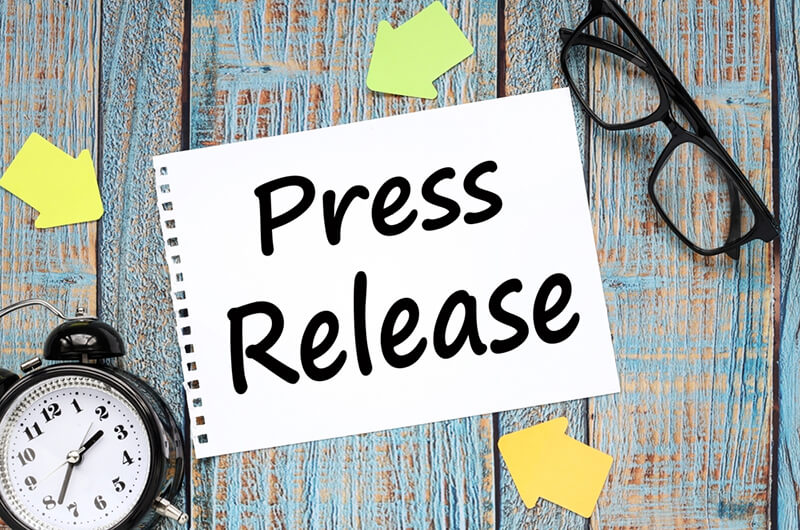- All Plans
- Yahoo Press Release
- Bloomberg Press Release + Yahoo Finance
- Business Insider Press Release
- Benzinga Press Release
- Digital Journal Press Release
- US Times Now Press Release
- AP News Press Release
- Yahoo Finance Press Release
- Street Insider Press Release
- MSN News Press Release
- USA Today Press Release
Brilliant Media Unveils the Essentials of Casual Writing in Books

United States, 29th Jul 2024 – Writing is freedom in its purest form.”, said a great thriller author, J.F. Penn. So, you should step out of the parameters of high-standard writing. And let your pen enjoy the freedom of writing casually.
This casual style of writing is often known as informal writing. And it gives you the liberty to address your readers. It has a conversational style and follows colloquialism in writing.
But there’s more to casual writing when it’s about book writing. Here’s an out-and-out guide on what is casual writing in a book.
Is Casual Formal or Informal, What is it?
Casual writing is an informal style of writing. It is like when you are talking with a friend, your siblings, or family. Such a kind of writing uses familiar phrases and everyday language. Meanwhile, you have more room to explore and to entertain yourself and your readers.
Like informal writing, it has more relaxed prose, direct language, and short sentences. Shorter and relaxed phrases like one-liners. It creates a more humanized experience, for instance, a Facebook post on a movie review.
Casual writing supports connecting with your audience through how you share mutual feelings on a topic. You don’t have to stress about the guidelines of the organizations. You write on an individual level. So, it’s mostly directed toward exploring the depth of your topic, character, setting, plot, etc.
Moreover, from the grammatical angle casual tone bails out from the flabbergasted formal phrase. It explains thoroughly is casual formal or informal.
Casual Tone in Writing
Grammatically, a casual tone of writing uses the first person pronouns, i.e.; I, my, we, etc. For example, instead of writing “You are requested to share updates about the assignment”, you write “I need assignment updates”.
Casual or informal writing contains colloquial language, personal anecdotes, ellipses, abbreviations, and contractions (they’re, I’m, you’d, etc). Usually, Formal or academic writing doesn’t use these acronyms, contracted words, etc. It observes simple syntax and no-brainer writing.
Moreover, the main point that sets casual writing apart from professional is that it uses Passive voice in sentences. Besides, the sentences contain everyday vocabulary. Unlike academic writing, the use of easy vocabulary can flexibly include your ideas and emotions in your writing.
Collectively, casual writing doesn’t follow strict grammatical rules. It is often starting from the middle of the conversation. Also, you can add sentence fragments, slang, or even leave the phrase incompleted with ellipses (…), for instance, “You gotta see this…”
An Inspiration for Your Book: Casual Writing Style Examples
You know the grammar guidelines for casual writing but there’s more to it. Casual writing styles are present in personal emails, non-fiction books, social media posts, text messages, blogs, vlogs, reviews, etc. When we are writing conversationally, we use casual writing.
Here are some examples of casual writing styles that follow informal rules without hurting grammar.
Example #1, Ellipses
Ellipses (sing: ellipsis) is a punctuation mark that consists of three dots (…). It shows there’s something left unsaid, pause, continuity, or a gap of words.
For instance, “So, there I was, minding my own business…”. In this sentence, we use ellipses with suspense.
Example #2, Colloquialism
Colloquial phrases or words are everyday language used by people of certain areas. It doesn’t follow the vocabulary protocols of formal or academic style. Such as Wanna, Dude, and Couch Potato are some of the American Coloquials.
A casual sentence with Colloquial can be for instance, “Dude, that movie was totally rad!”
Example # 3, In Medias Res (Starting in the Middle)
In Media Res is an interesting storytelling hack that starts a scene or narration from the middle of the story. It’s often a crucial point from the ongoing story. Such a practice hooks readers to crave more.
For instance, “I lifted my girlfriend’s cold corpse and ditched it in the nearby garbage, thinking ‘How did I end up killing her?’”
Example #4, Informal Language Use
Informal Language, as mentioned before, uses a more conversational approach in writing. It follows a friendly voice and simple syntax.
For instance, “Let’s chill and binge-watch some Netflix, yeah?”
Example #5, Conversational Tone
Since we have mentioned conversational tone multiple times, here’s an explanation. Sentences with a conversational tone approach human elements. Instead of a business person, authority, or bots, a conversational tone sounds more human-like to readers.
For instance, “So, wanna go to that new restaurant downtown?”
Example #6, Interjections
As free as the casual writing is, it also uses interjections. Interjections have no exact meaning rather they define emotions. They are free from grammatical rules. Such as, humph, wow, ouch, oh, alas, etc.
For instance, “Ugh, this traffic is driving me crazy?”
Example #7, Out of the Blue Change
Casual writing often has an abrupt change in the topic or tone. It often sounds unexpected or disjointed. These sudden changes jump from one conversation to another without a clear transition.
For instance, “And there, I was like, ‘OMG, can you believe that he went on one knee to propose to her?’ and then, like, I slipped and sprained my ankle.”
Example #8, Using Slangs
Casual language highly relies on slang. Slangs refers to words or phrases used based on their cultural definition rather than literal meaning.
For instance, “Duh, I am blown away by the deadlines. We’ll have to do the project asap.”
Example #9, Leading Statements
One technique that gives more informality in casual writing is leading statements. These statements are fundamentally introductions to a topic. It sounds like you are starting to make a point.
For instance, “So, guess what happened today…”
Example #10, Sudden Realization
Sudden realization is another abrupt element in casual writing. It is also known as Epiphany. It’s a defining moment or realization that leads to a change in a certain topic or character’s behavior.
For instance, “And it hit me: I’ve been wasting my life cleaning my cat’s poop.”
Understand the Comparision: Formal Vs Professional Vs Casual Writing
Through casual writing examples, you must have taken an idea of how fun it is to write. But if you are yet confused about the basic differences.
Here’s a Formal Vs Professional Vs Casual writing comparison.
Formal |
Professional |
Casual |
| The formal Tone is serious and distant. | The professional tone is polite and respectful. | The casual tone is clear and direct. |
| The formal language uses complex and technical vocabulary. | The professional language is clear and concise. | The casual language is simple and every day. |
| It uses strict adherence to grammar. | It uses correct and flexible grammar. | It uses relaxed grammar with contractions. |
| The purpose of formal writing is to convey authority and respect. | The purpose of professional writing is effective communication. | The casual writing purpose is to build relationships. |
| The formal context is academic or legal. | The professional context is business or corporate. | The casual context is everyday interaction. |
Write Casually in Book: Here’s how in 5 easy steps
Although, casual writing is quite straightforward to write. But usually, it confuses you to draw a line between casual and other while writing. So, there’s no shame in hiring a ghostwriting service to write a brilliant best-selling book for your business.
However, if you want to use casual or informal writing in your book narration, here’s a simple 5-step process.
Start with basic: know your audience
First, start with understanding who is your audience. Are they teenagers? Are they mothers? What are their talking style and attributes? How does your audience feel about a certain topic? What do they want to know?
Be informal and use a conversational tone
Write as you speak. Be more human while you write. You can do it by using contractions, slang, everyday expressions, light-hearted narratives, and simple vocabulary. Write it like you are discussing a story with a friend.
Ancient writing rule: show, don’t tell
Thirdly, your writing will entice readers to a great extent if you show rather than tell.
For instance, instead of saying “She walked in the office anxiously.” show her nervousness like, “Her hands were shivering as she held the knob of the office door. She slowly pushed the office door and stepped inside with trembling steps. There was a hint of sweat on her forehead when she stood there.”
Give Life to your characters and develop them with authenticity
Before you try to show, understand your characters. Give your character unique voices and personalities. Let them embrace flaws and quirks then define how their personality traits are as human beings.
Use a casual eye while you edit.
Once you are done, act like you are telling a story to a friend while editing. Cut out the flabbergasted words and include more everyday vocabulary and colloquial words.
Remember that casual writing isn’t about being sloppy or clumsy. It supports being genuine and relatable to a normal being.
Too busy to write? Hire a ghostwriter for Casual Writing
Collectively, now you know everything about casual writing. But does it still feel like you don’t have enough time to write a casual book for yourself? We have got you here too!
Hire a brilliant ghostwriting service that does all of the above. One that understands your audience, is conversational, shows instead of talking, develops authentic characters, and edits with accuracy.
In such a context, Brilliant Media offers an incredible ghostwriting service. It does end-to-end writing for your business’s best-selling books. Also, the payment plans are fully affordable. You will merely have to contact them and get your industry-leading book published with the best layout and structure.
Start growing your business today!
Media Contact
Organization: Brilliant Media
Contact Person: Brilliant Media Team
Website: https://www.brilliantmedia.co/
Email: Send Email
Country: United States
Release Id: 29072414869
